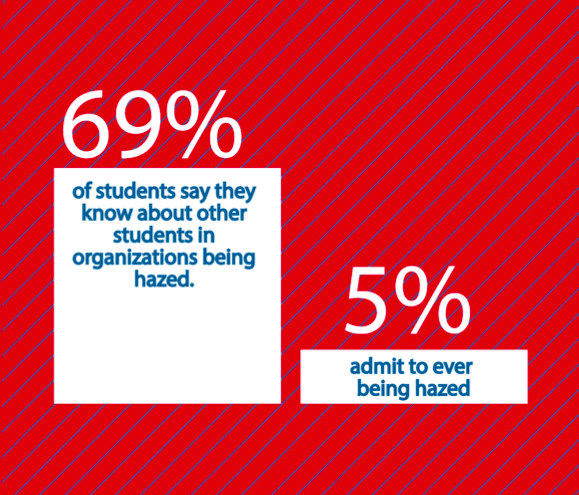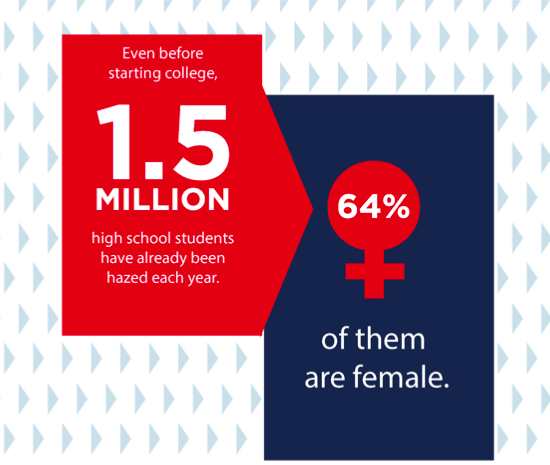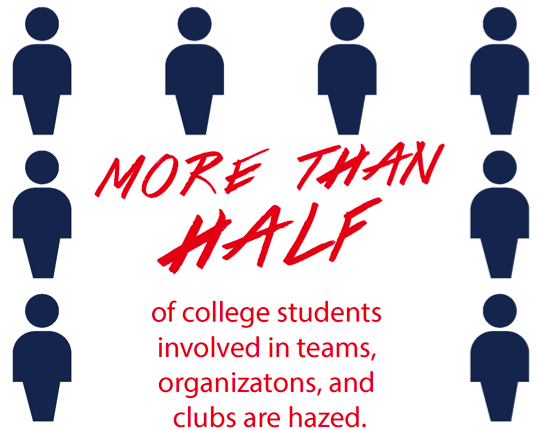WHAT HAZING LOOKS LIKE
Hazing is any action taken or any situation created intentionally that causes embarrassment, harassment or ridicule and risks emotional and/or physical harm to members of a group or team, whether new or not, regardless of the person’s willingness to participate.
Some definitions of hazing vary but all have common factors:
· Power differential between those in a group and those who want to join a group, or between senior and junior members of a group
· Intentional initiation rite, practice or ‘tradition’ involved
· Willingness to participate does not absolve responsibility for either party
EXAMPLES OF HAZING
Below are just some examples of hazing practices that occur:
· Forced activities for new recruits to ‘prove’ their worth to join
· Forced or required consumption of alcohol
· Requirement to eat spicy foods, other substances
· Requirement to endure hardships such as staying awake, menial tasks, physical labor, running while blindfolded, etc.
· Humiliation of new or potential members
· Isolation of new or potential members
· Beatings, paddling, or other physical acts against new or potential members
· Requirements for new or potential members to do things established members are not required to do
· Illegal activities such as requirement to steal local items as part of a scavenger hunt
DID YOU KNOW?
· Hazing occurs in sports teams, clubs, Greek life, cheerleading, honor societies and more
· Hazing is often about power and control. Hazing does not build unity
· More than half of students in colleges and universities involved in clubs, sports teams and organizations have experienced hazing
· A significant number of hazing incidents and deaths involve alcohol consumption
· Students are more likely to be hazed if they knew an adult who was hazed
· 2 in 5 students say they are aware of hazing taking place on their campus
· Hazing occurs in middle schools, high schools and colleges
· Both male and female students report a high level of hazing
IS THIS HAZING?
If you’re not sure whether or not something happening to you or to someone else is hazing, ask yourself these questions:
· Would I feel comfortable participating in this activity if my parents were watching?
· Would we get in trouble if a school/college administrator walked by and saw us?
· Am I being asked to keep these activities a secret?
· Am I doing anything illegal?
· Does participation in this activity violate my values or those of this organization?
· Is this causing emotional or physical distress or stress to myself or to others?
· Am I going to be able to get a job if I have to put a criminal arrest on my application?
Hazing Prevention Resources and Program Ideas
http://hazingprevention.org/wp-content/uploads/hazing__study.pdf
UM Resources:
Office of Fraternity & Sorority Life:
https://greeks.olemiss.edu/hazing-education
Office of General Counsel
https://legal.olemiss.edu/legal-issues/hazing/
Hazing Policy:
https://secure4.olemiss.edu/umpolicyopen/ShowDetails.jsp?istatPara=1&policyObjidPara=11079532
Hazing in the News



